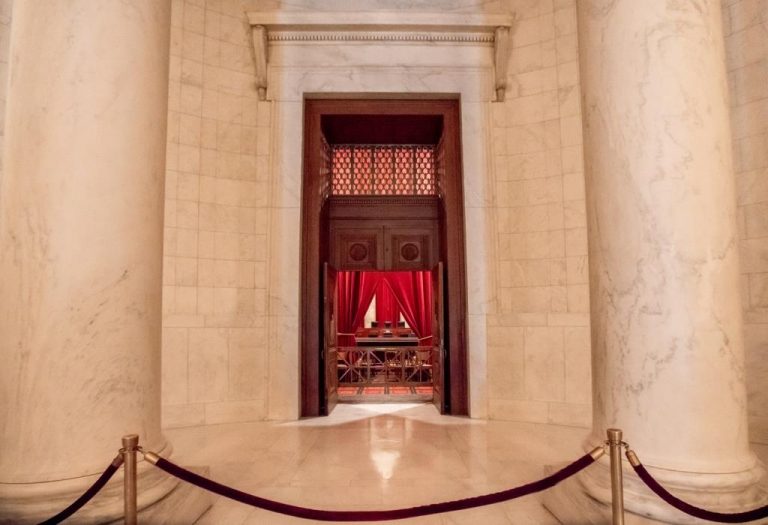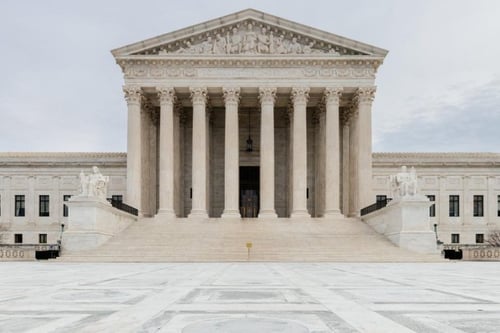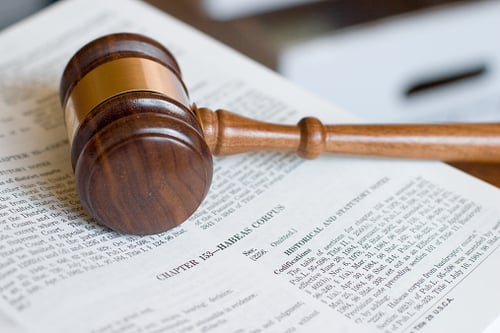
Filing A Petition For Writ Of Certiorari & Brief Of Amicus Curiae To The United States Supreme Court – Part 2 Of 2
18
Filing A Petition For Writ Of Certiorari & Brief Of Amicus Curiae To The United States Supreme Court – Part 2 Of 2
 As explained in Part One of this two-part blog article posting, I was asked to conduct research on the steps to file a petition for writ of certiorari and a brief of amicus curiae in the United States Supreme Court (USSC).
As explained in Part One of this two-part blog article posting, I was asked to conduct research on the steps to file a petition for writ of certiorari and a brief of amicus curiae in the United States Supreme Court (USSC).
This article includes the rest of my findings as relating to:1
-
A petition for writ of certiorari in the United States Supreme Court, on review from a judgment or order entered by the 11th Circuit Court of Appeals
-
An amicus curiae brief at the petition stage
My research was limited in scope and did not address USSC rules as they pertain to filing an amicus curiae brief at the merits stage or oral argument stage, a cross-petition for writ of certiorari, a response to any petition, an initial brief on the merits, procedures related to a case before the Court at the oral argument stage, etc.
Sections Covered in Part 1
In the first article, information covered the following:
-
Admission to the Bar
-
Appearance of Counsel
-
Considerations Governing Review on Certiorari
-
How to Seek Review
-
Time for Petitioning
-
Applications to Individual Justices
-
Content of a Petition for Writ of Certiorari
Our discussion picks up at the point when the Court enters an appropriate order.
Disposition of a Petition for a Writ of Certiorari
Whenever the Court grants a petition for writ of certiorari, the clerk will enter an order to that effect. The case will then be scheduled for briefing and oral argument. See Supreme Court Rule 16.2. A formal writ will not issue unless specially directed. Id.
Alternatively, the clerk may enter an order denying the petition, but the order of denial will not be suspended pending disposition of a petition for rehearing except by order of the Court or a justice. See Supreme Court Rule 16.3.
If the 11th Circuit certifies to the USSC a question or proposition of law on which it seeks instruction for the proper decision of the case, the procedure on the certified question is set forth in Supreme Court Rule 19.
Motions to the Court
Motions are governed by Rule 21, and the requirements of specific motions are set forth in that rule. Rule 21.2(b) provides that a motion for leave to file a brief as amicus curiae “shall be prepared as required by Rule 33.1, and 40 copies shall be filed…” As with any other filing, a motion for leave to file a brief as amicus curiae “shall be served as required by Rule 29.” Id. Further requirements for filing an amicus brief are set forth in the last section of this article.
Filing and Service of Documents; Special Notifications; Corporate Listing
Under Rule 29, a document is timely filed if it is received by the clerk within the time specified for filing, or if it is sent to the Clerk through the US Postal Service by first-class mail (including express or priority mail), postage prepaid, and bears a postmark other than a commercial postage meter label, showing that the document was mailed on or before the last day for filing; or if it is delivered on or before the last day for filing to a third-party commercial carrier for delivery to the clerk within 3 calendar days. See Supreme Court Rule 29.2.
In the past, I have sent the petitions to the clerk, via FedEx, on the day the petition is due, for delivery within 3 days.
Any document required to be served may be served personally, by mail, or by third-party commercial carrier for delivery within 3 calendar days on each party to the proceeding at or before the time for filing. See Supreme Court Rule 29.3.
When filing a petition for a writ of certiorari in booklet form, three copies shall be served on each party separately represented. Id. If personal service is made, it shall be done by delivery to the office of the counsel of record, either to counsel or an employee therein. Id. If service is by mail or third-party commercial carrier, it shall consist of delivery the document with the U.S. Postal Service, with no less than first-class postage prepared, or delivery to the carrier for delivery within 3 calendar days, addressed to counsel of record. Id. Note that “[o]rdinarily, service on a party must be in a manner at least as expeditious as the manner used to file the document with the Court.” Id.
In addition, an electronic version of the document shall be transmitted to all other parties at the time of filing or contemporaneous therewith. Id. The required contents for the proof of service are set forth in Rule 29.5.
Rule 29.6 states that every document, except an amicus curiae brief, “shall contain a corporate disclosure statement identifying the parent corporations and listing any publicly held company that owns 10% or more of the corporation’s stock.” If there is no such parent or public held company, a notation to this effect shall be included in the document. See Supreme Court Rule 29.6.
If such statement has been included in a document previously filed in the case, reference may be made to the earlier document (except when that statement appeared in a document prepared under Rule 33.2), and only amendments to the statement to make it current need to be included in the document being filed. Id.
When there is a material change in the identity of the parent corporation or publicly held companies that own 10% or more of the corporation’s stock, counsel shall promptly inform the clerk by letter and include, within that letter, any amendment needed to make the statement current. Id.
Note that all filers who are represented by counsel must also submit documents to the Court’s electronic filing system in conformity with the “Guidelines for the Submission of Documents to the Supreme Court’s Electronic Filing System” issued by the clerk. See Supreme Court Rule 29.7.
Document Preparation: Booklet Format
Except certain documents, which are expressly permitted to be submitted on different paper, every document filed with the Court shall be prepared in a 6⅛ by 9¼ inch booklet format. See Supreme Court Rule 33.1(a). The text shall appear in a Century family, 12-point type with 2-point or more leading between lines. See Supreme Court Rule 33.1(b).
Footnotes shall be in 10-point type with 2-point or more leading between lines. Id. The text of the document must appear on both sides of the page. Id.
In addition, each booklet shall be produced on opaque, unglazed paper that is not less than 60 pounds in weight, with margins of at least three-fourths of an inch on all sides. See Supreme Court Rule 33.1(c). The text field, including footnotes, may not exceed 4⅛ by 7⅛ inches. Id. The document shall be bound firmly in at least two places along the left margin. Id. Spiral, plastic, metal, or string bindings may not be used. Id.
A Petitioner must file 40 copies of a booklet-format document, and one unbound copy of the document on 8.5 by 11-inch paper. See Supreme Court Rule 33.1(f). The cover of any petition for a writ of certiorari and any separate appendix thereto must be white. See Supreme Court Rule 33.1(g).
A document prepared in booklet format must contain a certificate signed by the attorney, stating that the brief complies with the word limitations, state the number of words in the document (according to the word processing system used to prepare the document), and shall accompany the document when it is filed and shall be separate from it. See Supreme Court Rule 33.1(h).
There are companies that will prepare and actually file these booklets for practitioners, as they are complicated. The companies can be very costly, however.
Supreme Court Rule 34 sets forth the requirements for the cover page of the booklet. In addition, the rule requires that, at the close of the document, there shall be the name of counsel of record and any other counsel identified on the cover of the document, as may be desired. See Supreme Court Rule 34.3.
Every appendix to a document must be preceded by a table of contents that describes each document in the appendix. See Supreme Court Rule 34.4.
Brief for an Amicus Curiae
Amicus curiae briefs are governed by Rule 37. It provides, “[a]n amicus curiae brief that brings to the attention of the Court relevant matter not already brought to its attention by the parties may be of considerable help to the Court. An amicus curiae brief that does not serve this purpose burdens the Court, and its filing is not favored.” See Supreme Court Rule 37.1. Such brief may only be filed by an attorney admitted to the Court in accordance with Rule 5. Id.
An amicus brief submitted before the Court’s consideration of a petition for writ of certiorari may be filed “if it reflects that written consent of all parties has been provided, or if the Court grants leave to file under subparagraph 2(b) of this Rule. See Supreme Court Rule 37.2(a).
An amicus brief in support of a petitioner or appellant shall be filed within 30 days after the case is placed on the docket or a response is called for by the Court, whichever is later, and that time will not be extended. Id.
An amicus brief in support of a respondent, or appellee, or defendant shall be submitted within the time allowed for filing a brief in opposition or a motion to dismiss or affirm. Id.
An amicus curiae filing a brief shall ensure counsel of record for all parties receive notice of its intention to file a brief at least 10 days prior to the due date for the amicus brief, unless the amicus brief is filed earlier than 10 days before the due date. Id. “Only one signatory to an amicus curiae brief filed jointly by more than one amicus curiae must obtain consent of the parties to file that brief.” Id.
A petitioner and/or respondent may submit a letter granting blanket consent to amicus briefs, stating the party consents to the filing of amicus curiae briefs in support of either or of neither party. Id. The Clerk will note all notices of blanket consent on the docket. Id.
When a party to the case withholds consent, Rule 37.2(b) provides that, “a motion for leave to file an amicus curiae brief before the Court’s consideration of a petition for a writ of certiorari…may be presented to the Court.” “The motion, prepared as required by Rule 33.1 and as one document with the brief sought to be filed, shall be submitted within the time allowed for filing an amicus curiae brief, and shall indicate the party or parties who have withheld consent and state the nature of the movant’s interest.” See Supreme Court Rule 37.2(b). Such a motion is not favored.” Id.
A motion for leave to file an amicus brief may not exceed 1,500 words. See Supreme Court Rule 37.5.
Any brief or motion filed under Rule 37 must have proof of service and must comply with Rules 21, 24, and 33.1, “except that it suffices to set out in the brief the interest of the amicus curiae, the summary of the argument, the argument, and the conclusion”. See Supreme Court Rule 37.5.
A party served with a motion for leave to file an amicus brief may file an objection, which shall be prepared in accordance with Rule 33.2. Id.
The brief of a brief for amicus curiae at the petition stage must have a cream cover and be no more than 6,000 words. See Supreme Court Rule 33.1(g)(x).
A brief for an amicus curiae in support of the plaintiff, petitioner, or appellant or in support of neither party, on the merits shall have a light green cover and be no more than 9,000 words. See Supreme Court Rule 33.1(g)(xi).
Finally, a brief for an amicus curiae in support of the defendant, respondent, or appellee on the merits must have a dark green cover and be no more than 9,000 words. See Supreme Court Rule 33.1(g)(xii).
Rule 37.4 states that no motion for leave to file an amicus brief is necessary if the brief is presented on behalf of:
-
The United States by the Solicitor General
-
Any agency of the US, when submitted by the agency’s authorized legal representative
-
A State, Commonwealth, Territory, or Possession when submitted by its Attorney General
-
A city, county, town, or similar entity when submitted by its authorized law officer
Note that Rule 37.6 requires any amicus brief (except those filed by entities exempted) to indicate whether counsel for a party “authored the brief in whole or in part and whether such counsel or a party made a monetary contribution intended to fund the preparation or submission of the brief, and shall identify every person other than the amicus curiae, its members, or its counsel, who made such a monetary contribution. The disclosure shall be made in the first footnote on the first page of text.”
Appellate Litigation Specialists
Appellate specialization is necessary to successfully navigate the Federal Rules of Appellate Procedure. The Brownlee Law Firm specializes in both civil and criminal appeals at the state and federal level.
Contact us today for help with your appellate needs.
Source:
1 All Rules cited in this article are summarized or quoted directly from “Rules of the Supreme Court of the United States” adopted April 18, 2019 and effective July 1, 2019 and can be found here.




